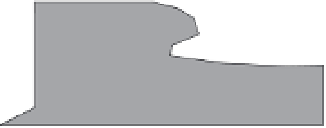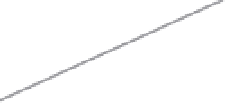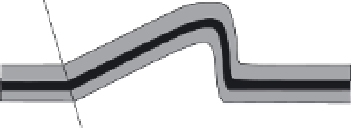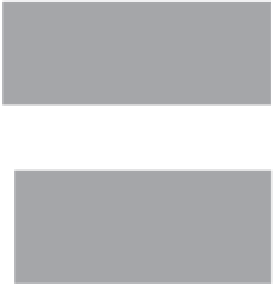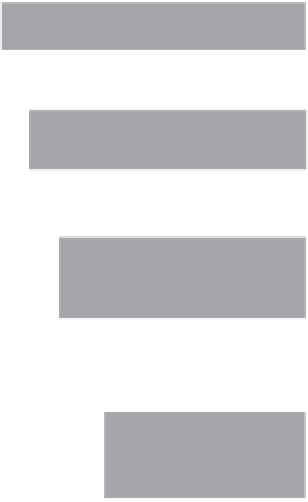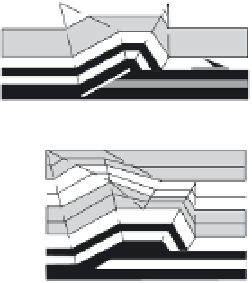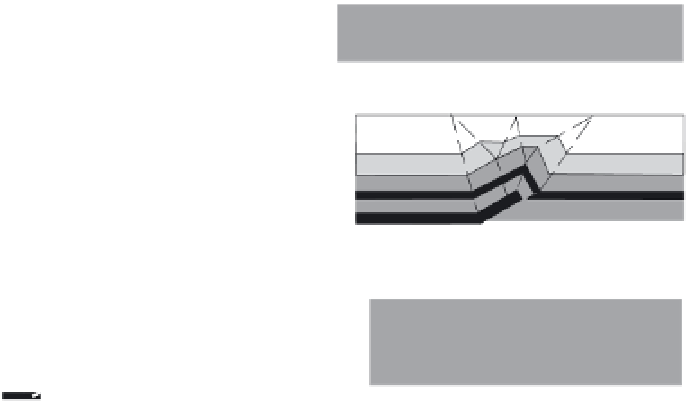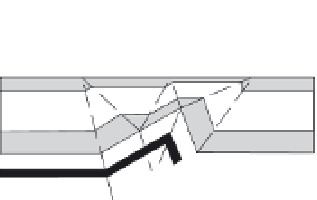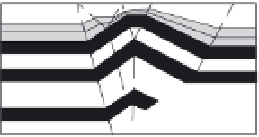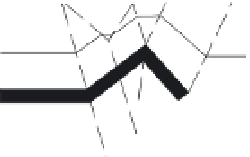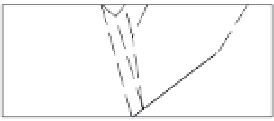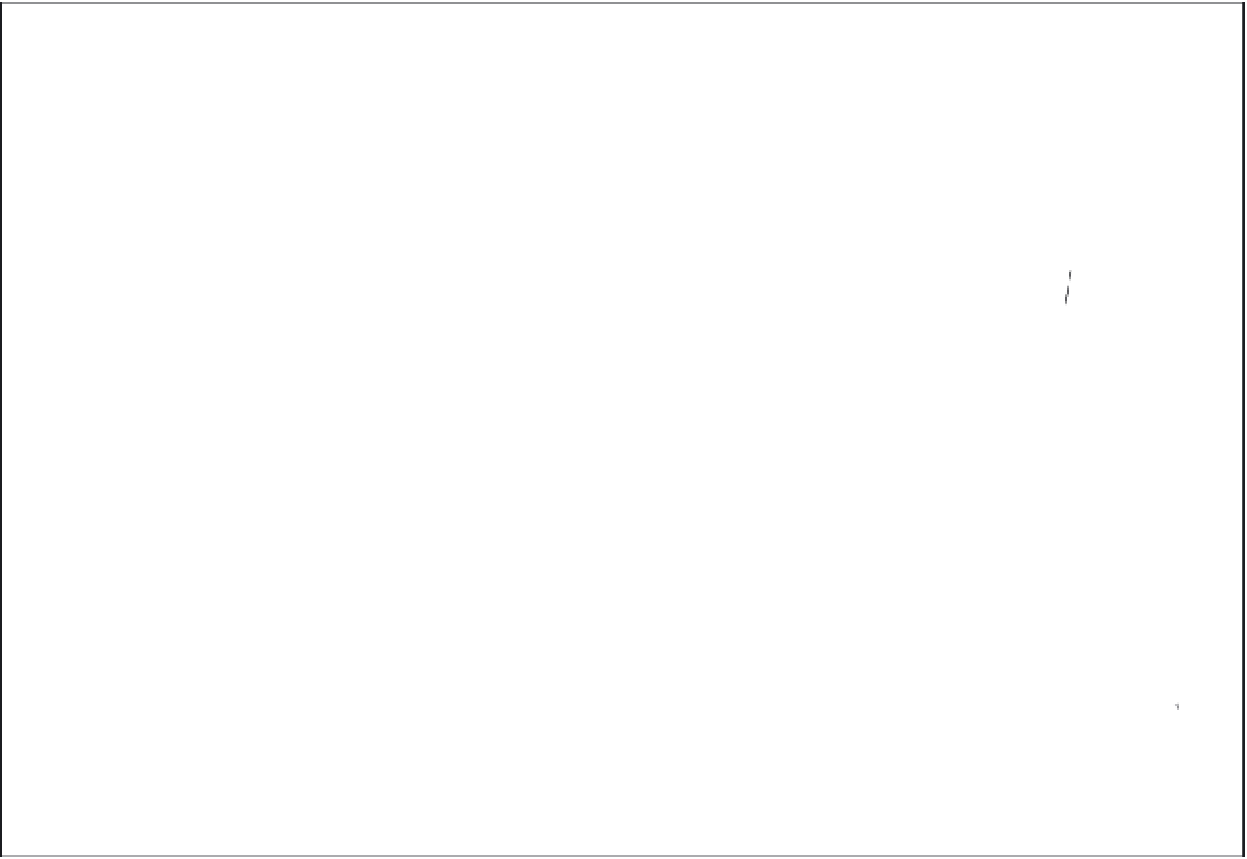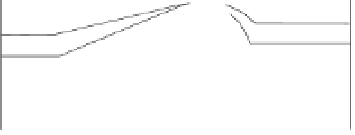Geology Reference
In-Depth Information
A
B
C
Fault-Bend
Fold
Fault-Propagation
Fold
Displacement-Gradient
Fold
constant area; constant bed length
constant area; changing bed length
constant area; constant bed length
continuous forelimb rotation
i
i
i
forelimb angle established
forelimb angle established
ii
ii
changing limb length
synfolding deposition
synfolding deposition
ii
iii
iii
continuous forelimb rotation
note constant forelimb angle
forelimb translation without folding
iii
iv
iv
E
D
Detachment Fold
ii.
Trishear Geometry
ii.
Trishear Fold
velocity vectors
growth triangle
trishear zone
changing limb length & forelimb angle
hanging wall
velocity of hangingwall
r
elative t
o footwall
trishear
zone
tip line
footwall (fixed)
Fig. 4.36
Models for folds associated with thrust faults.
Each fold is depicted where uplift of the anticlinal crest is slower than the rate of sediment accumulation in the unfolded regions off the flanks of the folds.
This difference in rates creates growth strata that record the development of the fold. Note that the final shape of the deformed bedrock can be very similar
among these different models, but that the geometry of the growth strata differs markedly among them. Reliable reconstruction of step-by-step fold growth is
commonly dependent on analyzing associated growth strata. A. Fault-bend fold. B. Fault-propagation fold. C. Displacement-gradient fold. D. Detachment fold.
E. Trishear fold: (i) geometry of the deforming region of a trishear fold, showing rotation of slip vectors and change in magnitude from the top of the trishear
zone to its base; (ii) model of trishear fold and growth strata above a thrust. Modified after Wickham (1995) and Allmendinger (1998).

















